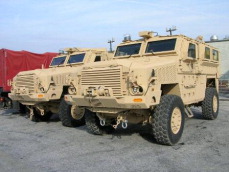WASHINGTON, June 3, 2010 — The newly released Naval Operations Concept 2010, a document that helps to ensure U.S. maritime assets line up with overall national defense strategy, takes a “whole-of-government” approach to partnership with other U.S. agencies.
“The goal of the document is to coordinate with the QDR [Quadrennial Defense Review],” U.S. Navy Capt. Mark Montgomery, Navy Strategy Branch Head, said yesterday during a DoDLive Bloggers Roundtable discussion of the report, which was released last week.
While the QDR guides decisions for the size and structure of the overall military force, the NOC focuses on roles that the Marine Corps, Navy and Coast Guard play.
The NOC, Montgomery said, describes how sea-based forces will confront contemporary threats and challenges including “enhancing security, preventing conflict and if necessary, prevailing in war.”
He added that it builds on the naval services’ overarching strategy document, “A Cooperative Strategy for 21st Century Seapower.”
What is new about the NOC, Montgomery said, is a “whole-of-government approach.” In addition to working in partnership with other U.S. agencies, the NOC supports working with allies to avoid duplicating efforts, “so that we are wisely spending what are increasingly scarce resources.”
U.S. Navy Capt. John McLain, of the Navy Strategy and Policy Division, also participated in the discussion. He said that in many ways, the updated vision for the maritime strategy is already being realized. “We typically are engaged as part of a whole-of-government effort within usually an international framework,” he said.
As one example, McLain recounted the fast response and contributions made by naval forces to multi-agency and international aid efforts after a massive earthquake erupted in Haiti in January.
The NOC document, McLain explained, elevates the role of humanitarian assistance and disaster relief as, “not just reactive disaster response, but also proactive humanitarian assistance.” Montgomery added that the NOC includes sections on confronting irregular challenges and on expanding the definition of deterrence.
He acknowledged that some external audiences expected to see specifics in terms of force size and ship numbers in the NOC, but he said it is not intended to be a requirements document.
Montgomery added that Navy analysts will take part in upcoming defense future war fighting campaign scenarios which could shape the future size and structure of maritime forces.
“We wouldn’t want to prejudge the results of these war fighting campaign scenarios, nor would we want the operational concept of the Navy tied to a change in any one threat,” Montgomery said.
The main audience for the NOC, he said, is internal and the content aims “to explain to the officers and sailors down on the deck plates what the naval operational concept is [and] how we execute the ‘ways’ associated with the [‘means’] of the maritime strategy.”
McLain said the NOC acknowledges that naval forces are rebalancing resources, and that “we have to perform our core missions with one Navy and [it] must be able to operate across a full spectrum of operations.”
Source:
U.S. Department of Defense
Office of the Assistant Secretary of Defense (Public Affairs)

 von
von 